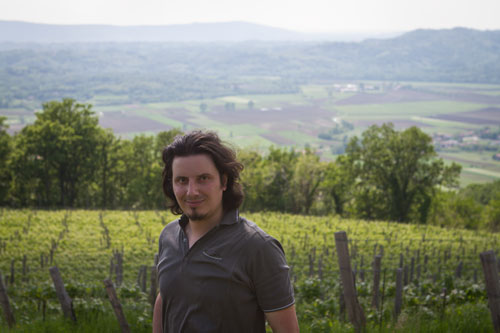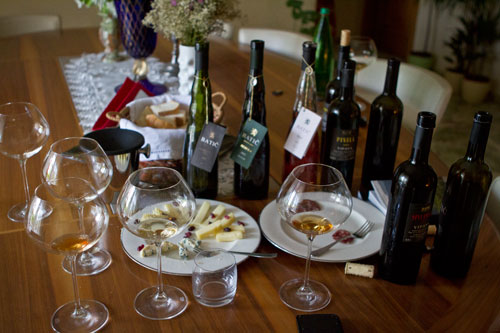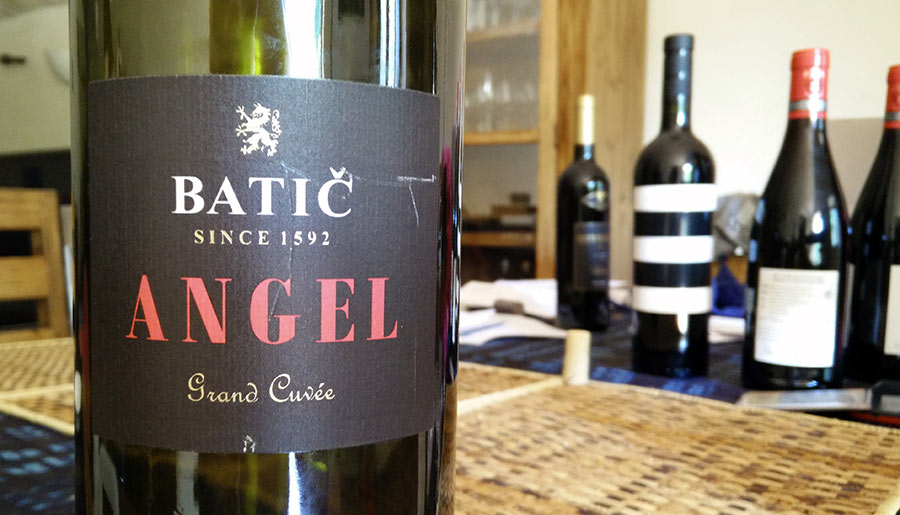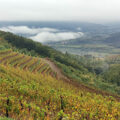
It’s hard to remember how many times exactly we’ve encountered Miha Batič and his wines around the world. Of absolute certainty, there was a tasting at Terroir in San Francisco and then at Zagreb Wine Gourmet 2012. There were undoubtedly other times tossed in, but it had finally reached a point where we needed to turn the tables and pay him a visit at his winery in Western Slovenia. So, on our way to Vinistra in Poreč, we stopped by the small village of Šempas near the west end of the Vipava Valley to finally see where the Batič magic happens.
In case Šempas (a village of about 1,000 people) doesn’t set off the memory bells in terms of recognition, you’re not alone. Google Maps seems to have little idea where it is as well and following the initial directions from this almighty keeper of our knowledge had us nearly heading back to the Italian border. Then we said screw it, played it by ear and followed our intuition and after encountering multiple winery signs of the Vipava Valley Wine Route we eventually found Batič. And there was Miha, along with an engineer working to outfit one of his tractors with some new form of wind turbine that he’s going to use to blast the vines. Not being viticulturists, we didn’t have a huge understanding as to how it worked exactly other than to further his family’s natural growing of vineyards.
This is a key aspect to point out in that despite the craze in other places, Batič has been making “natural wines” for years now. It started with his father taking a larger concern about his health and the wine he was putting in his body. It has since become their entire philosophy to winemaking.
This becomes fully evident when gazing out from one of their vineyards at 300m. It’s clean and fresh up in those hills and one of the photos often associated with this vineyard are the ducks that they let loose upon it to cleanse it of snails as, like with all their vineyards, they use no pesticides or other man made elements to pervert the course of natural grape growth. It makes for small harvests (about 50,000 bottles a year) from their total 21 hectares, but holy hell it also makes for good wines.
And that’s what this all comes down to. Miha’s wines really need to be tasted (at least for the first time) as close to his winery as possible. While we’ve had them before in many locations, they’re not loaded with various additional chemicals such as sulfites so having them travel great distances can be tricky unless it’s done under very careful conditions such as with refrigerated shipping containers. But it’s there, in the explosive embrace of Miha’s presence where everything comes together. The ridiculously hard work of not using pesticides, the construction of new tractor contraptions, and of course the work of Miha and his father to elaborate these intricate, subtle wines mostly based upon their unknown, but spectacular local Slovenian grapes.

Rebula 2011 is fresh and light in the nose, made with local Rebula grapes (known as Ribolla Gialla in Italian). Lovely touches of minerality. Dances across the bottle leaving an intricate layer of acids on the palate as it finishes. Develops a calcium bitterness as it breathes that compliments the acidity.
Rebula
Rose 2012 has light red cherry notes to the nose. Full bodied and not sweet despite being a “half sweet” wine. Soft earthy notes as it breathes.
Cab Sauvignon
Pinela 2009 has a very delicate and complex nose with light floral elements, as well as honeycombs. It keeps changing in the glass as it opens making it insanely unique and a pleasure to meditate over.
Pinela
Sivi Pinot 2011 is the Slovenian name for Pinot Grigio and it receives one week of skin contact that gives it a pale, pinkish hue. Mature apricots appear in the nose and small underlying minerality. The acidity is downplayed and is overall very mellow in the palate. Could easily be dismissed in a fast sip as being simple, but it has no end of deepness to it if a time is spent in its company.
Pinot Gris
Zaria 2011 has an incredibly unique nose that generally drifts to honey aromas. Floral elements in the body show fruit blossoms. It’s wonderfully fresh in the body and develops a slight bitter melon quality with just a bit of time. A simply wonderful bottle that seems to have just about every type of grape they grow in it.
50-60% Pinela, 20% Zelen, Vitoska, Muscat, Klarnica, Chardonnay, Rebula
Chardonnay 1999 is just crazy. Cited as one of their best years ever, it shows this smoky nose with hints of cedar, tobacco, and roasted nuts. The body needs a good amount of time to fully decant and shows a caramel base to it once it’s fully open. Miha freely admits that from time to time, they get a bit “rock and roll” around there and “accidentally” finish off a few bottles of their meager stocks.
Chardonnay


